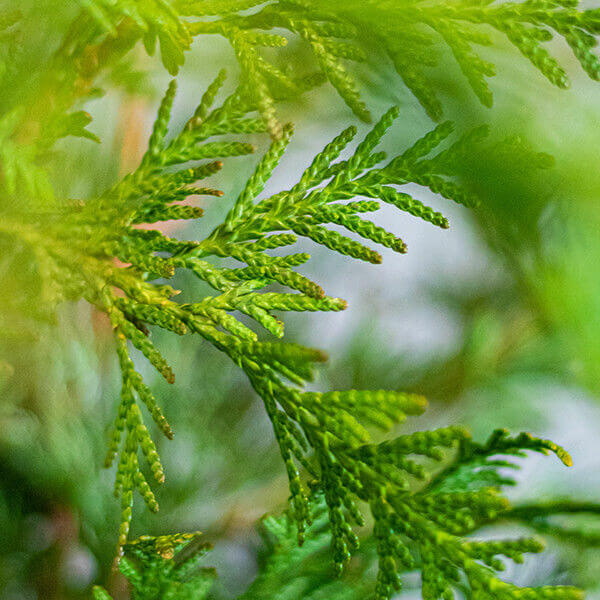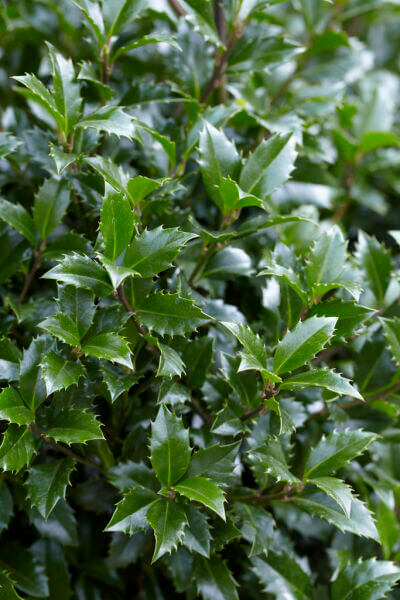Hedge Plants For Outdoor Layout
Hedge Plants For Outdoor Layout
Blog Article
Hedge Plants For Rustic Gardens
Enhance your garden's attraction with lush hedge varieties such as Yew (Taxus), Thuja, Laurel, Photinia, and Bamboo, celebrated for their structural integrity and ecological advantages.
Yew and Thuja offer evergreen protection and winter durability, while Laurel uses quick growth and broad, aromatic leaves.
Photinia includes seasonal appeal with its dynamic red foliage, and Bamboo provides a low-maintenance, tranquil atmosphere.
These hedges enhance air quality, reduce noise, and produce tranquil, personal areas.
Proper planting, spacing, and upkeep make sure energetic development and environmental harmony.
Explore how these rich ranges can raise your garden's appeal and wellness.
Secret Takeaways
Transform Your Garden With Lush Hedge Varieties
- Select Yew for its dense, evergreen development and exceptional durability.
- Select Laurel for its fast development and broad leaves, ensuring quick personal privacy.
- Pick Photinia for its lively seasonal foliage, which turns a striking dark red.
- Utilize Bamboo for a low-maintenance, winter-hardy hedge with aesthetic appeal.
- Space plants 2-3 per meter and prune routinely for ideal development and health.
Popular Hedge Plants
When changing a garden with lavish hedge ranges, it's important to consider popular hedge plants such as Yew, Thuja, Laurel, and Photinia due to their unique characteristics and benefits.
Yew (Taxus) is highly esteemed for its longevity and dense, green growth, making it a prime choice for withstanding landscapes.
Thuja is noted for its evergreen foliage and robust winter strength.
Photinia includes seasonal vibrancy with red leaves that darken over time, developing dynamic visual appeal.
Laurel offers fast growth and aromatic, broad leaves, ideal for quick personal privacy.
Furthermore, Bamboo is an exceptional option for atmosphere, using a low-maintenance, winter-hardy choice that enhances the garden's visual with its elegant, swaying walking canes.
These choices cater to a range of horticultural requirements and preferences.
Advantages of Garden Hedges
Garden hedges provide a multitude of benefits, making them an important addition to any landscape. These natural barriers are cost-efficient to execute and offer significant wind protection, boosting air circulation and adding to sound decrease. The dense foliage of hedges like Thuja and Beech guarantees privacy by blocking visibility, developing a peaceful and secluded environment.
Hedges likewise play an essential function in microclimate policy, providing a steady environment that fosters plant development and reduces temperature level variations. Their intricate leaf structures filter toxins, improving air quality and adding to a much healthier garden ecosystem.
Additionally, hedges master sound reduction, soaking up and deflecting sound waves to lower ambient sound levels. This dual performance of supplying both acoustic and visual personal privacy enhances the total tranquility and aesthetic appeal of any garden.
Planting and Upkeep Tips
For a successful hedge, precise preparation of the planting location is crucial. Guarantee the soil has appropriate pH and drain to support strong root advancement.
Space the plants properly for the selected types. Water the hedge frequently during its preliminary growth stage, adjusting as required with seasonal changes.
Execute a organized pest control and illness avoidance strategy, using chemical or natural treatments when essential. Regularly examine for aphids, mites, and fungal infections.
Apply mulch to keep wetness and suppress weeds. Seasonal pruning promotes dense growth and air flow, necessary for plant health.
Following these guidelines will assist you cultivate a lively, well-kept hedge that enhances the charm of your garden.
Spacing and Cutting Guidelines
Spacing and Trimming Standards
Correct spacing and trimming are crucial for cultivating healthy, visually appealing hedges. Appropriate spacing ensures each plant gets enough nutrients, light, and airflow.
Follow these guidelines for optimal hedge maintenance:
- Spacing: Position hedge plants 2-3 plants per meter to encourage robust development.
- Pruning Strategies: Regular pruning is necessary for keeping preferred hedge height and shape. Trim brand-new development in summer season and cut back older wood during winter season.
- Seasonal Care: Adjust cutting schedules and approaches according to seasonal requirements to make sure plant health.
- Hedge Height: Routinely monitor and cut to preserve the desired hedge height and accomplish uniform aesthetic appeals.
Complying with these steps will guarantee your hedge flourishes, boosting both the appeal and functionality of your garden.
Picking the Right Hedge
Choosing the Right Hedge
Selecting the proper hedge involves examining factors such as mature height, foliage density, and ecological resilience. Successful hedge plant choice needs understanding each types' development characteristics and site-specific versatility.
For instance, Yew (Taxus) offers outstanding durability and dense development, while Thuja is significant for its winter durability. In addition, considering maintenance requirements is vital; fast-growing species like Laurel or Privet demand regular trimming, whereas low-maintenance choices like Bamboo or Ivy may be preferable for those seeking minimal maintenance.
Ecological factors such as soil type, light availability, and moisture conditions need to likewise direct the selection procedure. This cautious approach makes sure the selected hedges will flourish, providing both functional and visual advantages to the garden landscape.
Delivery and Planting Suggestions
To ensure your hedge plants prosper, they need to be delivered by specialized couriers and planted without delay upon arrival.
Follow these essential steps for effective planting:
- Soil Preparation: Improve the soil with organic matter to improve drain and nutrient material.
- Planting Depth: Create a trench twice the width and equal to the depth of the root ball.
- Watering Methods: Water completely after planting, keeping the soil consistently moist but not filled.
- Mulching: Use a layer of mulch to maintain wetness and suppress weeds.
Customer Support and Service
Provided the important function of prompt assistance in horticultural pursuits, our customer support team is offered 6 days a week through telephone, e-mail, and social networks to use skilled suggestions and swiftly address any concerns. Their dedication to fast response times ensures customer complete satisfaction by solving questions related to plant health, optimum planting approaches, and upkeep schedules.

Response Time
Telephone
6 days a week
Within 24 hr
This thorough assistance system, enhanced by an excellent 9.3/ 10 customer score, highlights our commitment to improving the gardening experience for every client.
Frequently Asked Questions
How Long Does It Take for Hedge Plants to Develop?
Hedge plants generally require one to 3 years to become fully established, with the specific period varying by types and growing conditions.
Reliable here care throughout this important duration is important for robust growth. Consistent watering, watchful weed control, and appropriate fertilizer application are pivotal in promoting strong root advancement.
For instance, fast-growing species like Laurel might develop faster, while slower-growing varieties such as Yew may take longer. Persistent maintenance speeds up the establishment procedure, leading to dense and healthy hedges.
What Are the Best Hedge Plants for Personal Privacy?
The concern of the very best hedge plants for privacy includes evaluating evergreen and deciduous choices.
Evergreen hedges like Thuja, Laurel, and Cypress supply year-round coverage, guaranteeing constant personal privacy.
In contrast, deciduous hedges such as Beech offer seasonal personal privacy, shedding leaves in colder months.
Secret upkeep tips for privacy hedges include regular trimming, fertilizing in spring, and appropriate spacing-- generally 2 to 3 plants per meter.
Furthermore, constant watering and thorough weed elimination are crucial for promoting healthy, dense growth.
Can Hedge Plants Attract Wildlife to My Garden?
Yes, hedge plants can attract wildlife to your garden by providing important advantages like shelter, food, and nesting websites, consequently boosting regional biodiversity. Yew, holly, and laurel are excellent for attracting birds, while ivy supports a variety of pests.
However, it is necessary to note that there are some disadvantages, such as increased maintenance to handle pests and routine maintenance. Carefully selecting and maintaining hedge ranges can help balance these disadvantages and advantages, eventually fostering a vibrant and sustainable community in your garden.
Are There Any Blooming Hedge Plants Available?
Yes, there are flowering hedge plants offered that can enhance the charm of your garden.
For example, Elaeagnus, likewise called Olive Willow, produces aromatic white flowers in the fall, adding a touch of sophistication.
Photinia, another popular choice, showcases lively red leaves that mature into an abundant green, creating a vibrant visual effect throughout the seasons.
To make sure these plants flourish, it's vital to practice appropriate pruning strategies and seasonal maintenance, such as cutting brand-new growth in the summer season and cutting back in the winter season.
These measures will help keep the health and aesthetic appeal of your flowering hedges.
How Do I Avoid Pests in My Hedge Plants?
To prevent bugs in hedge plants, employ natural insect control approaches and keep proper hedge care. Introduce helpful insects like ladybugs, which take advantage of damaging pests, to create a balanced community.
Frequently inspect your hedges for signs of invasion and quickly eliminate any afflicted parts to avoid the spread. Make sure the health of your hedges by using well balanced fertilizers and providing appropriate water.
Make use of mulching to retain soil wetness and proper spacing to minimize plant stress and promote robust growth. These practices collectively help in lessening bug problems and preserving a healthy hedge.
Conclusion
In essence, selecting the ideal hedge varieties such as Yew, Thuja, and Laurel can change any garden into a tranquil sanctuary. These plants supply year-round greenery, improve aesthetic appeal, and deal practical benefits like sound decrease and wind protection.
Appropriate planting strategies, precise spacing, constant watering, and seasonal cutting are vital for optimal development.
Trusted shipment services and professional client support make sure a smooth experience from purchase to planting, making it simpler than ever to raise your outdoor space.
Garden hedges provide a wide range of benefits, making them an important addition to any landscape. These natural barriers are affordable to execute and supply considerable wind defense, improving air circulation and contributing to sound decrease. The dense foliage of hedges like Thuja and Beech makes sure privacy by blocking visibility, developing a secluded and peaceful environment.

Pruning Methods: Regular pruning is essential for keeping preferred hedge height and shape. Trim new development in summertime and cut back older wood during winter season.
Report this page